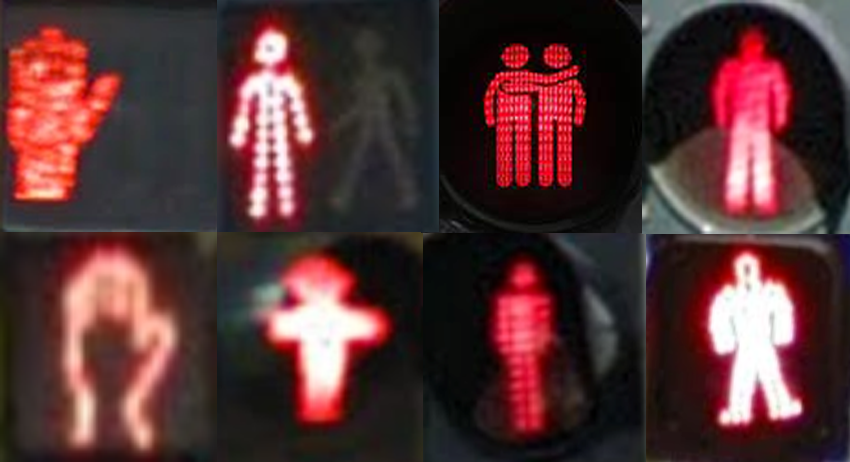
My favorite thing about traveling is the little things. And with Google’s Maps, you can celebrate those without going anywhere. Here are “stop walking” signs from cities around the world.
Europe
As expected, Europe has a lot of diversity, particularly Switzerland:
Geneva, Switzerland has this skinny person

Lucerne, Switzerland has a lanky Giacometti type

Zurich, Switzerland also goes lanky, but a little more of the Age of Aquarius, Platonic ideal, smooth edges, hard ideas style that you get in that city.
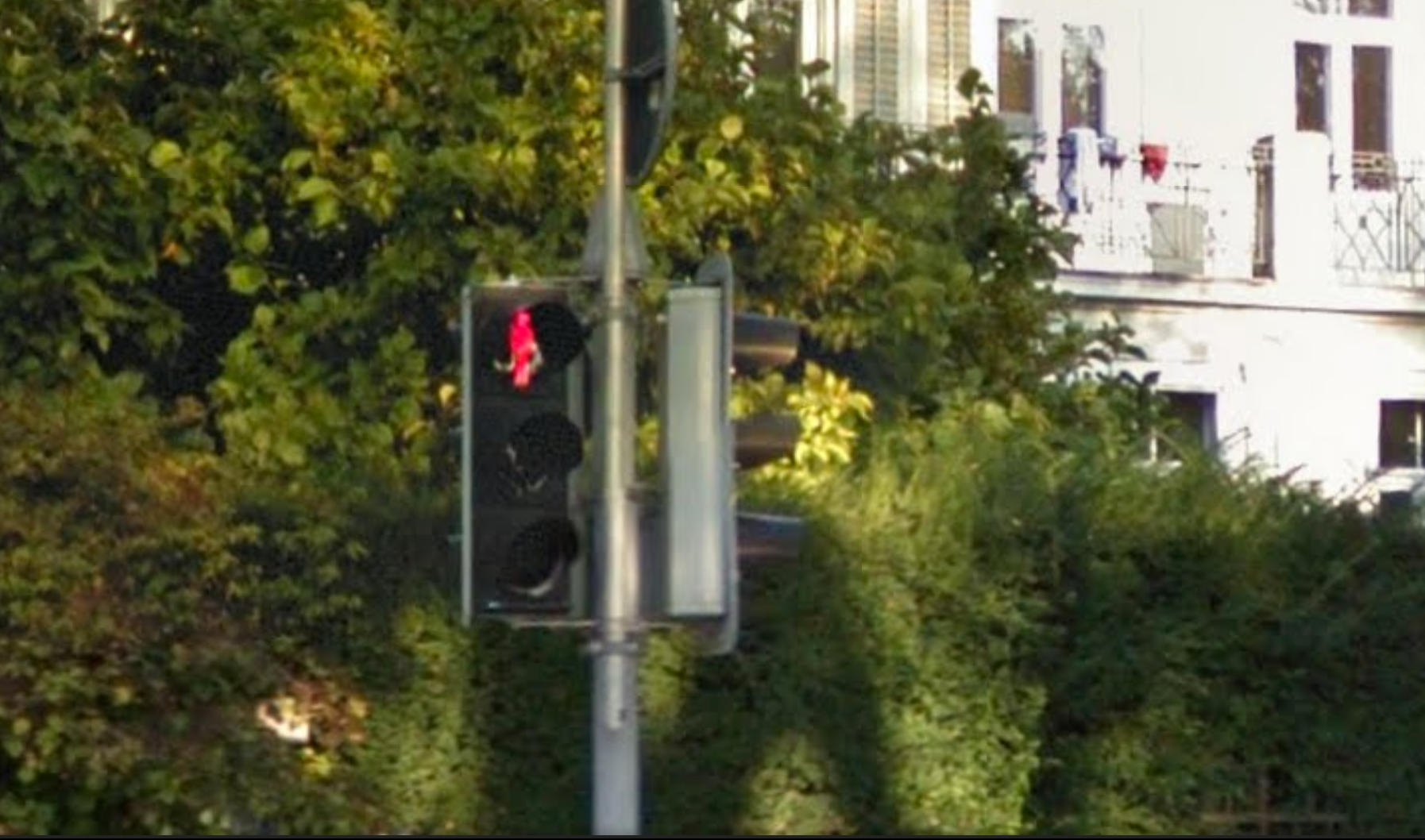
More of Europe:
Berlin, Germany is v. different.

Vienna, Austria, which put these up during a recent Eurovision contest, gets the prize.

Moscow
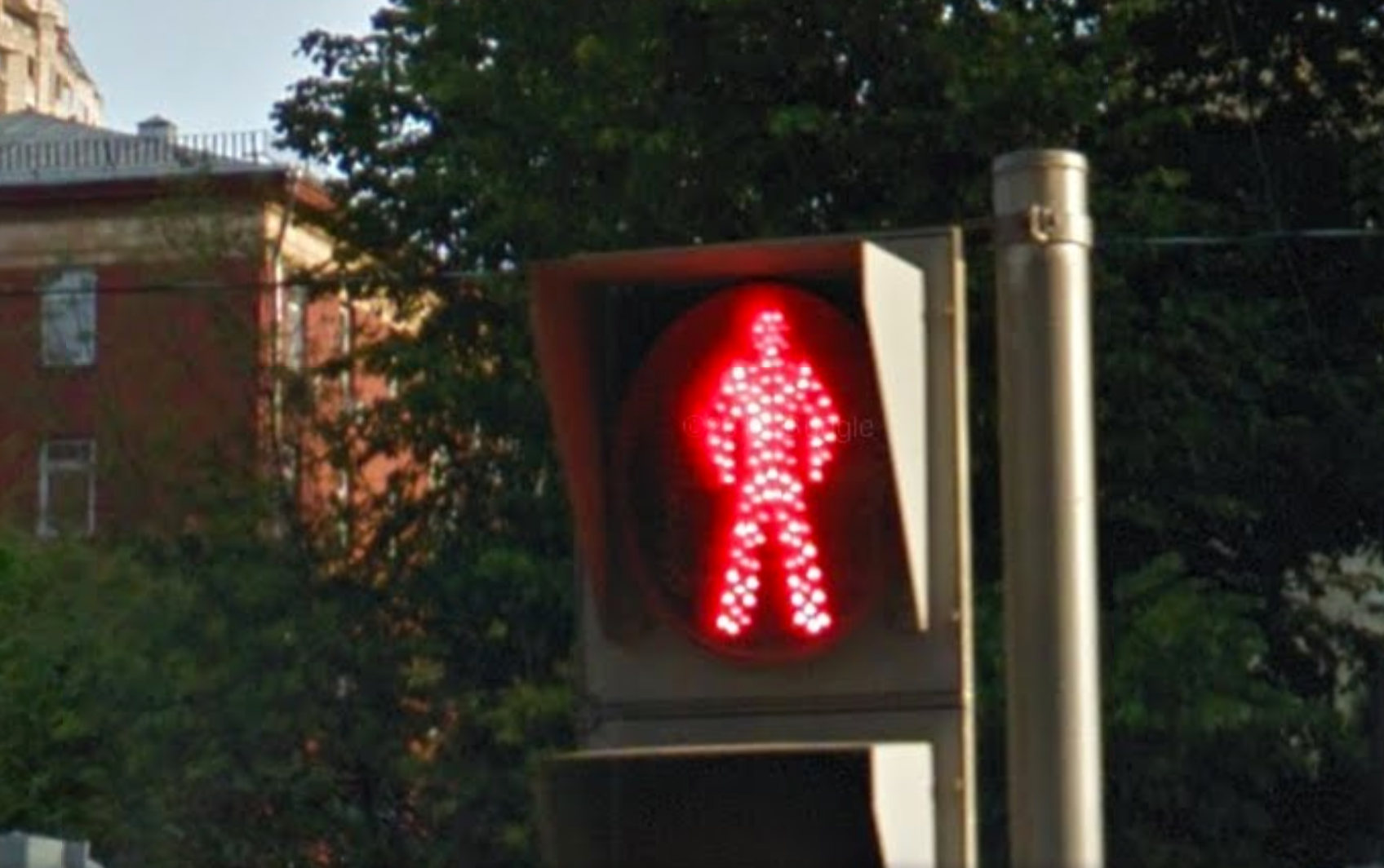
Oslo, Norway means business!

Stopping and going, Brussels, Belgium has style

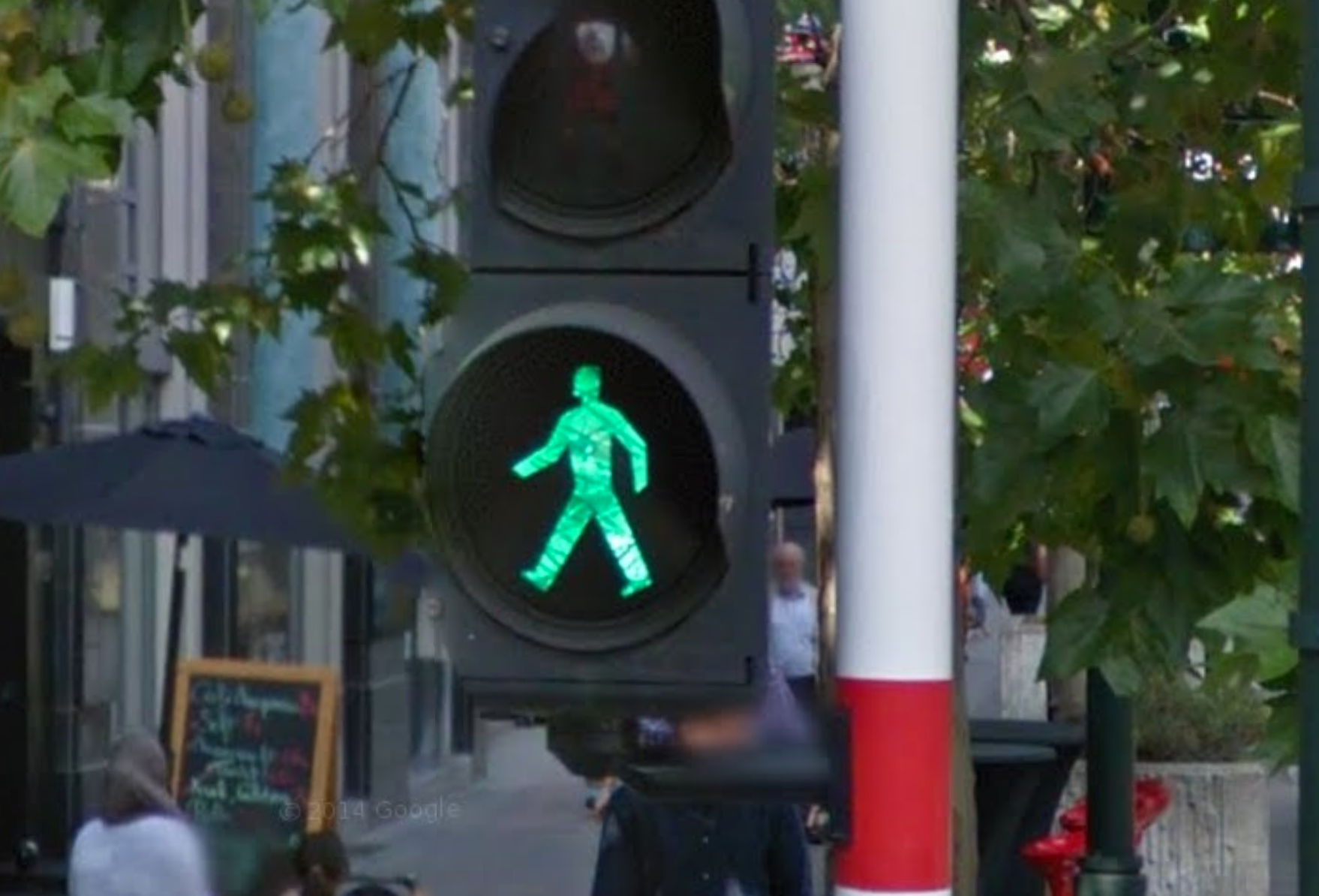
North America
The huge US is depressingly homogeneous, especially in comparison to the much smaller Switzerland. Maybe there’s a monopoly in the US traffic-light market?
NYC
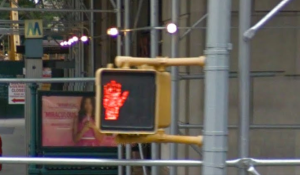
LA
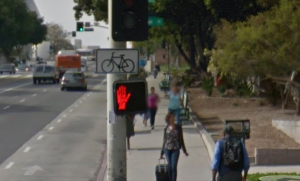
Chicago
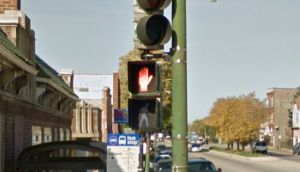
Atlanta
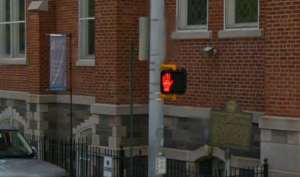
St. Louis

Zooming out to the rest of North America doesn’t seems improve things, though I admit I could have looked harder.
Montreal, the least Anglophone Canadian city, deviates from the US mold by only a bit, by hollowing out the hand. It’s “walk” guy is better though — I’ve got a picture of one below.
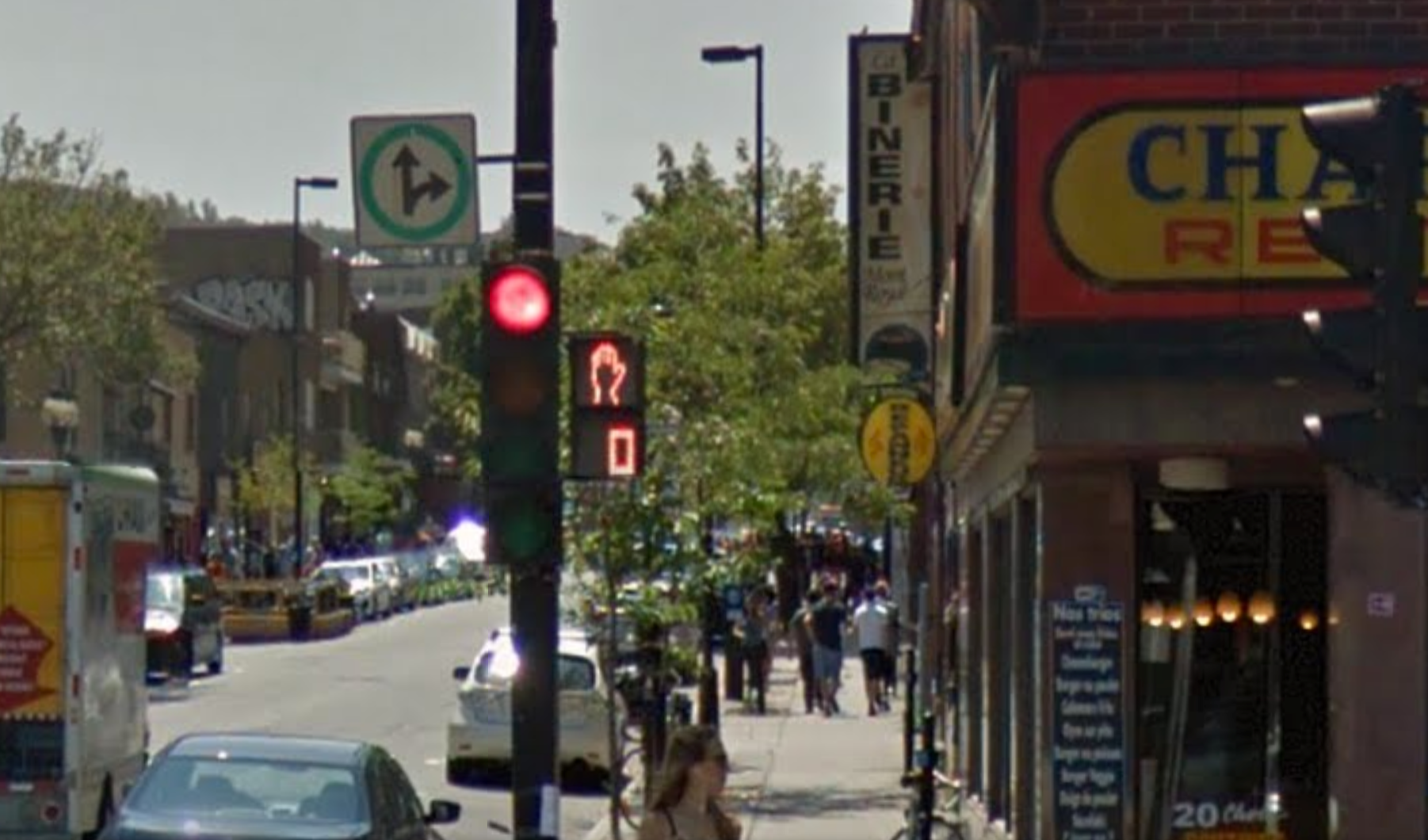
I pathetically couldn’t find any lights in Mexico City and haven’t checked other major Mexican cities, though I’m guess that border towns at least will look American.
Africa
In Africa, I tried Addis Ababa, Lagos, Accra, Nairobi, and even Cairo, but Google hasn’t shot any of them. I only found Streetview in South Africa. Here is Pretoria

East Asia
There is also very little Streetview in China. I tried Beijing, Shanghai, and a few other Chinese cities. All I found was Hong Kong. I guess that by the time we come to envy China for not having been scanned, Google will have them scanned too. China has over 200 cities of population over 1,000,000. There are only 9 in the US that big. Other parts of east Asia, like Japan and South Korea, are much better.
Hong Kong is realistic enough to automatically have its identity fizzed out by Google’s algorithms.
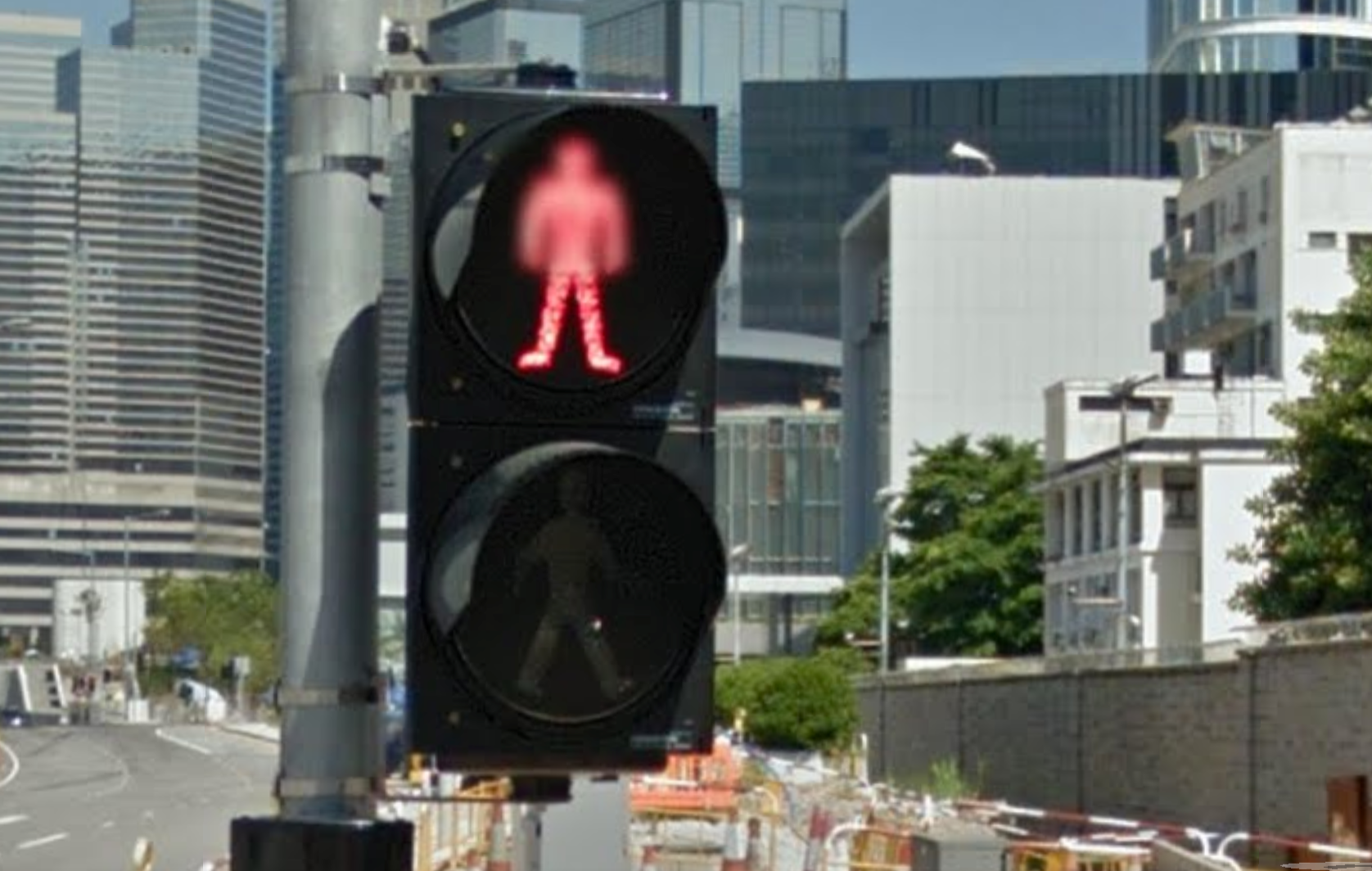
Tokyo, Japan. Looks like a worker. I was told that, in Japanese, the word for jaywalking translates to “red light, don’t care.”
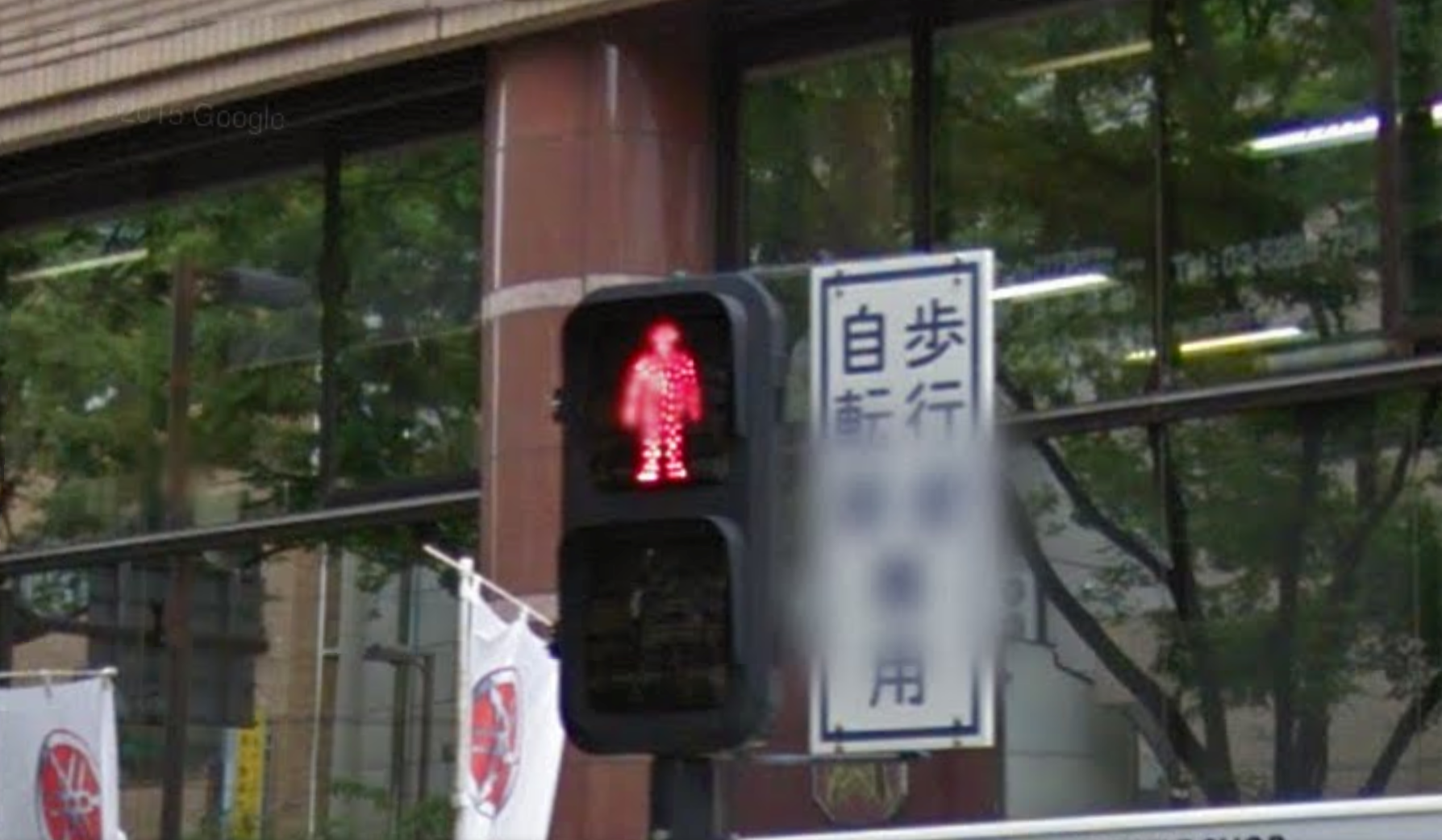
Seoul, South Korea
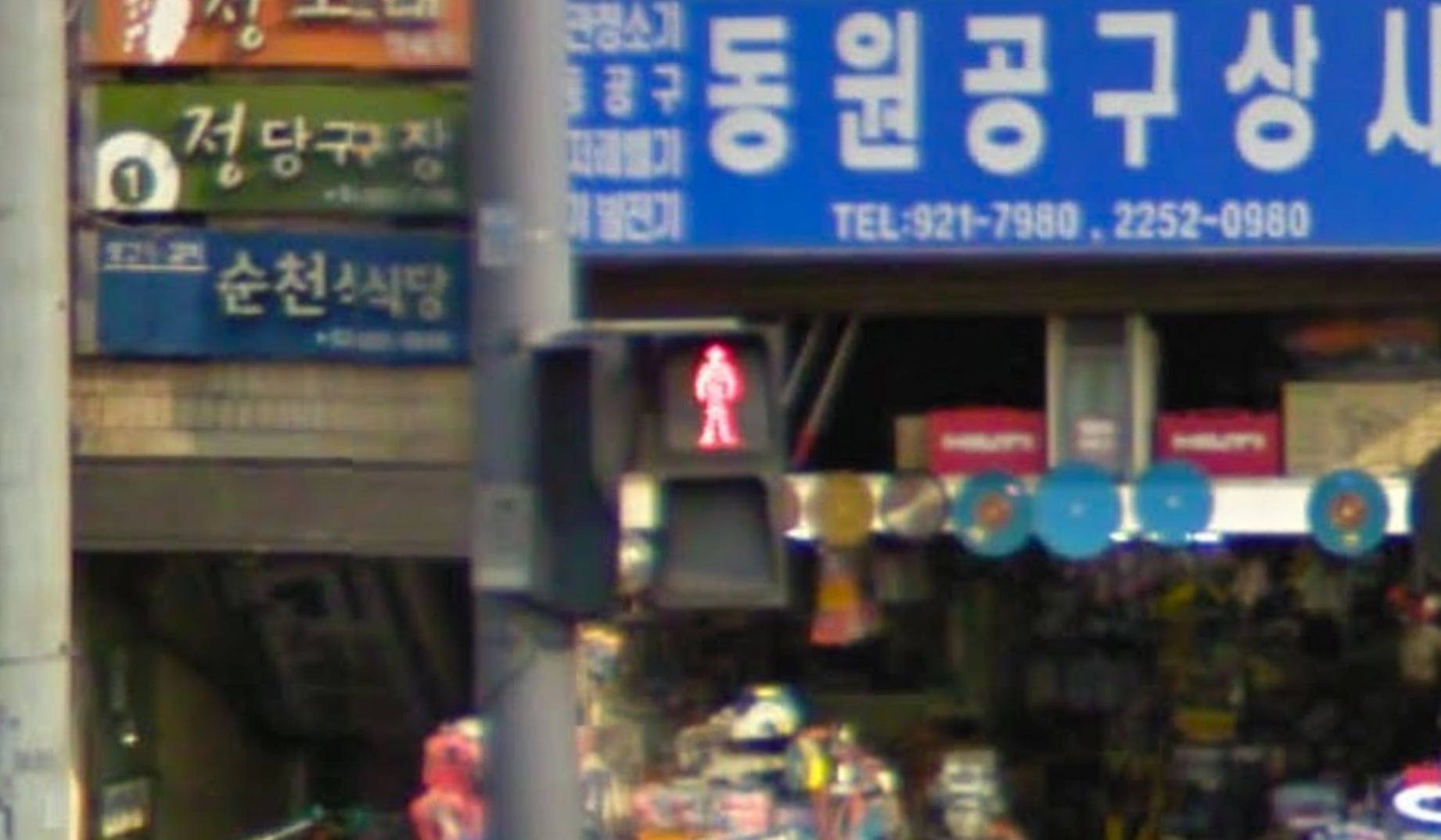
South Asia
I didn’t have any luck finding lit crosswalks in south Asia, but that could be my problem.
Southeast Asia
In southeast Asia, I only looked in Manila, which only recently went up on Streetview in the past year I think, but they mostly only have crosswalks in their upscale neighborhoods, and, in-line with the USA-philia over there, those few look very much like the American ones

Middle East
In the Middle East (and outside of Israel), I only found usable intersections in Dubai, whose lights look like the Swiss ones above. Only connection I can think of is that that’s where they keep all their money

Israel has more. Here is Tel Aviv. Pretty manly, right? Wait till you see Sao Paolo.
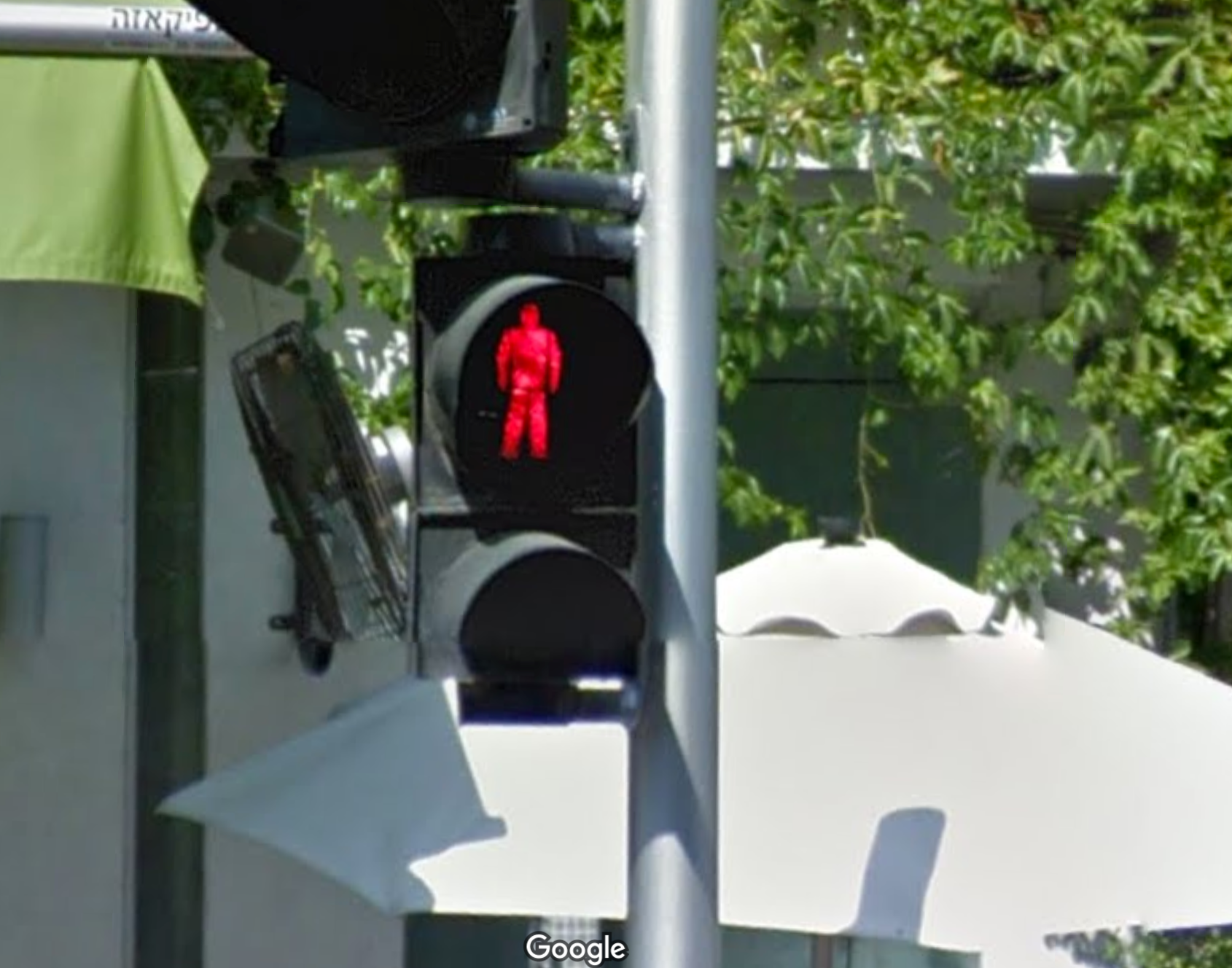
South America and Latin America
South America is also very diverse. I only looked a bit, and many cities are unscanned, but it seems that there is a lot more interesting variety there than in other parts of the world. In fact, you can find different lights in the same intersection! In Santiago you’ll see a silhouette of the “walk” light — sprightly fella — and a more generic “walk” light guy walking in the other direction. These two really are from the same intersection.
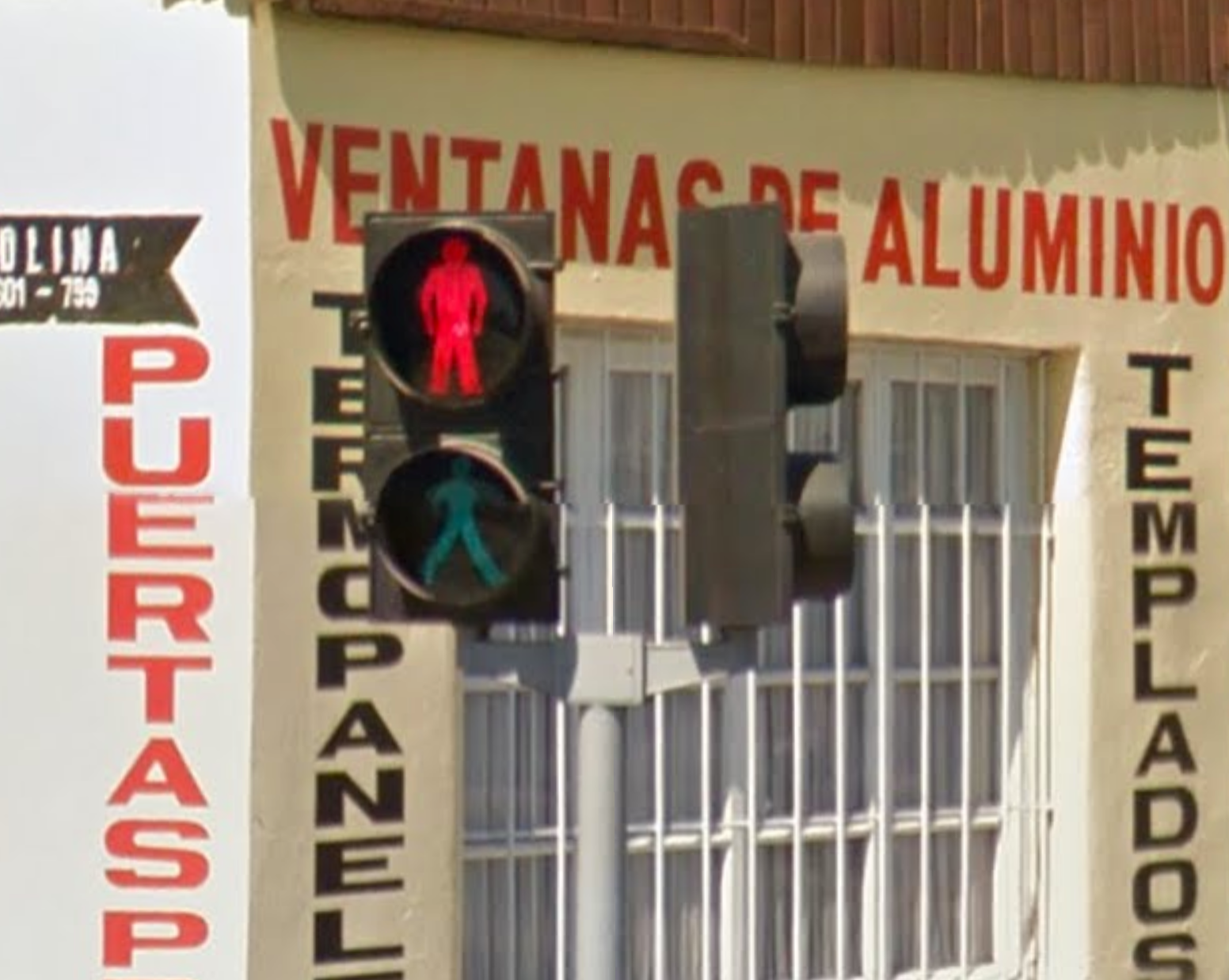
Santiago, same intersection, walking guy walking the other way
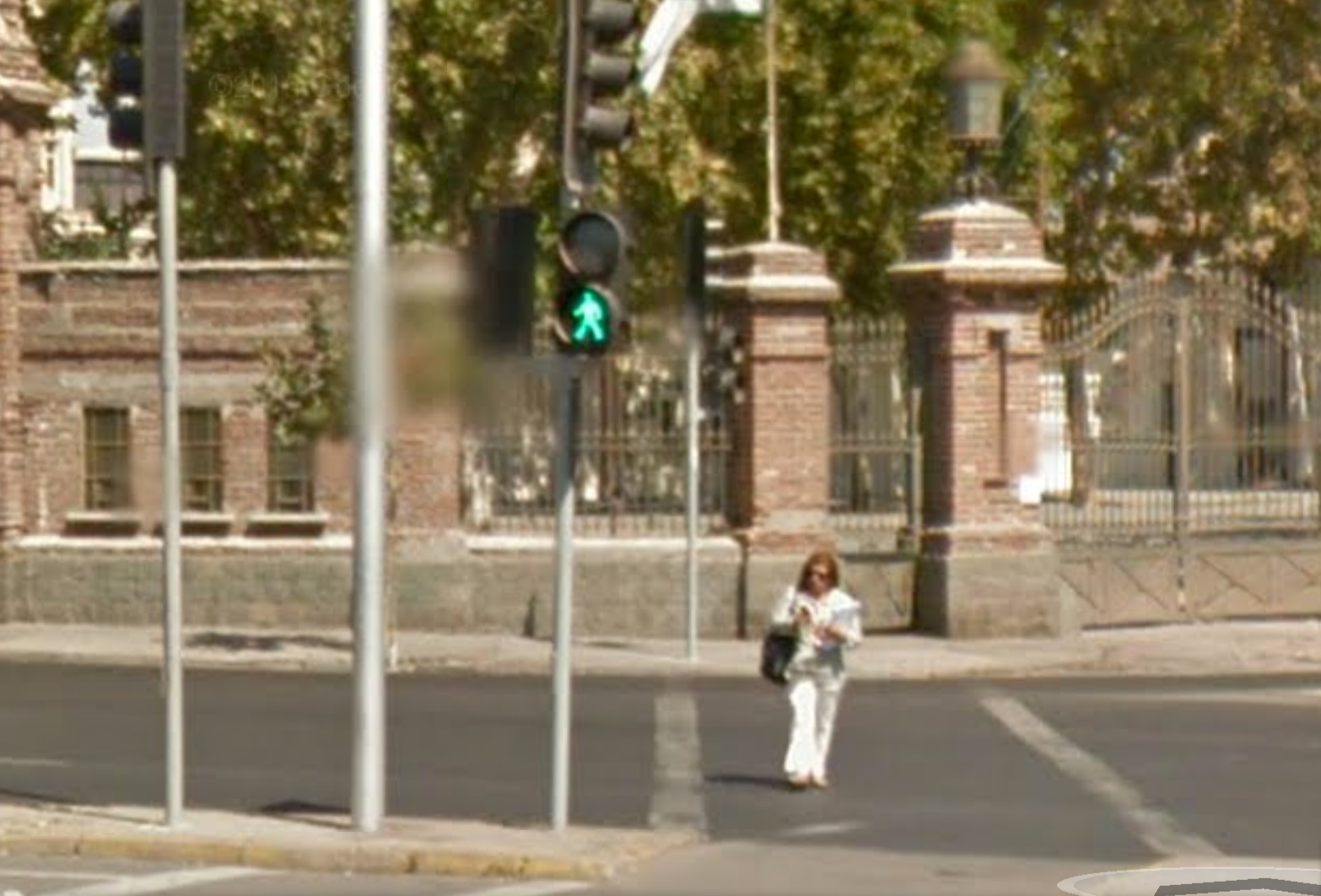
Bogota, Colombia
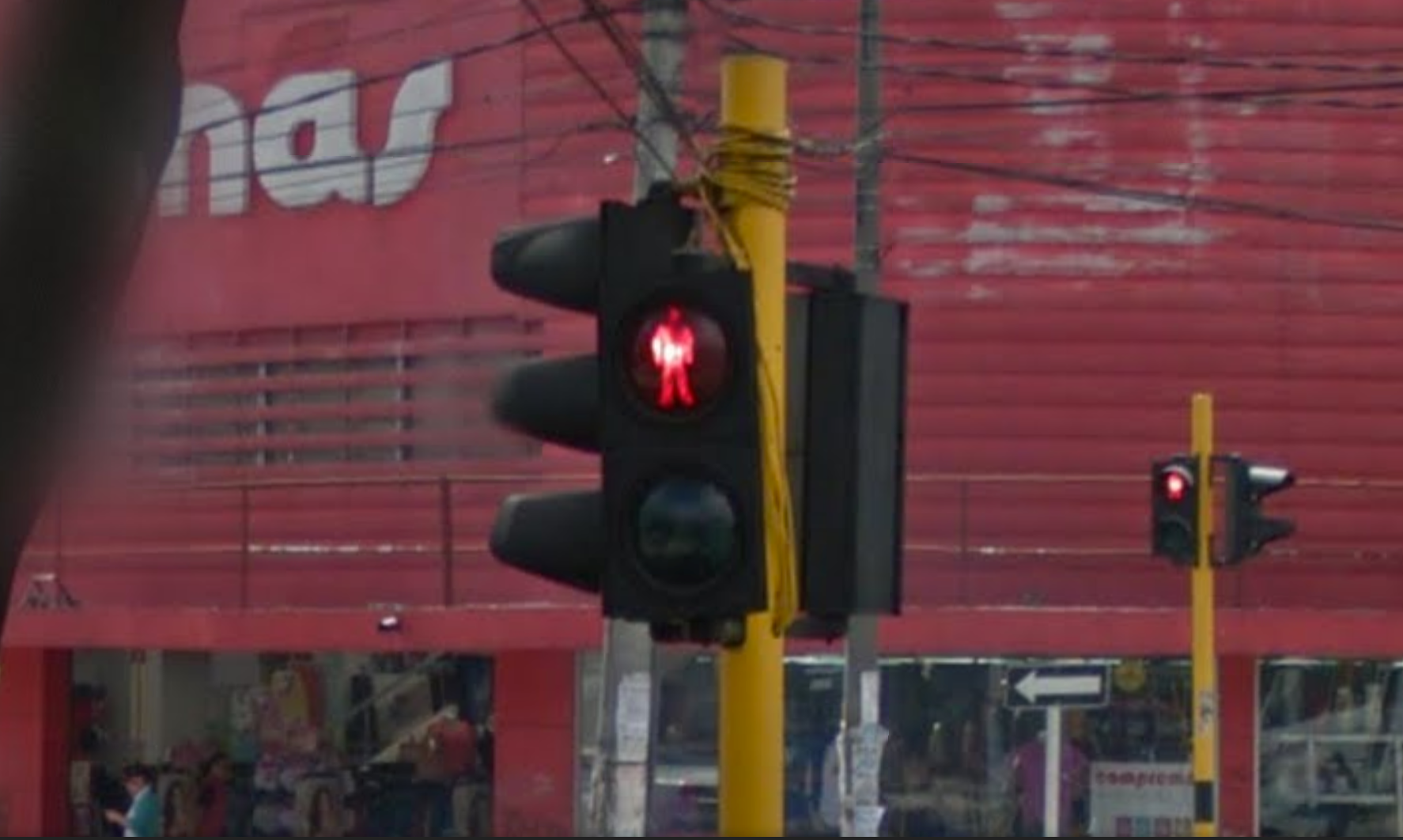
It looks like Sao Paolo, Brazil has a burly burly strong man. I can’t figure out if the crookedness adds to or subtracts from his apparent virility.
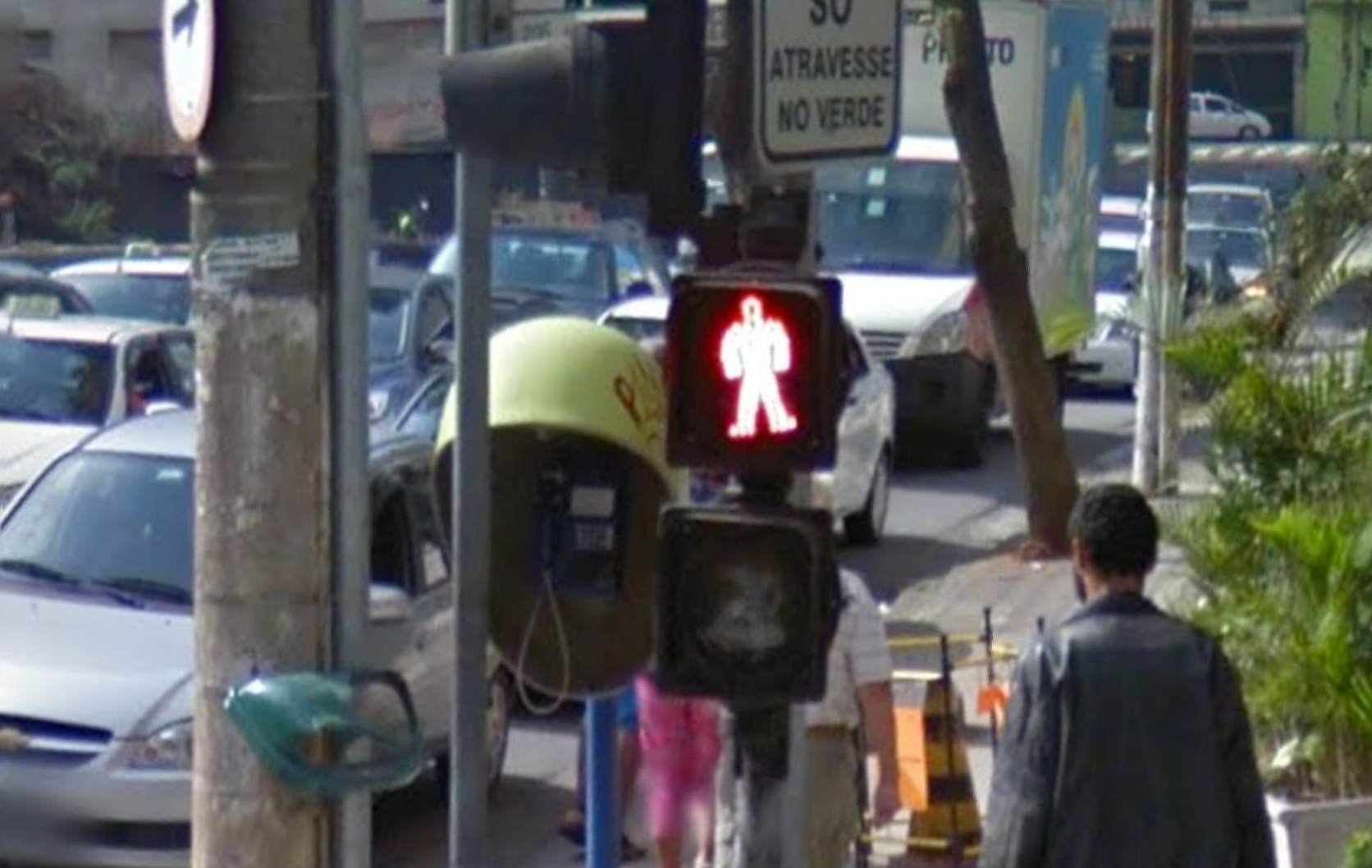
“Walk” lights
“Walk” lights are harder to catch in Streetview than “stop”s. That said, I got a not-bad collection of those too. The lessons above stick: the US is homogenous; variety happens elsewhere. And, outside the US, the walker tends to be green and walk to the left instead of the right.
NYC

Atlanta
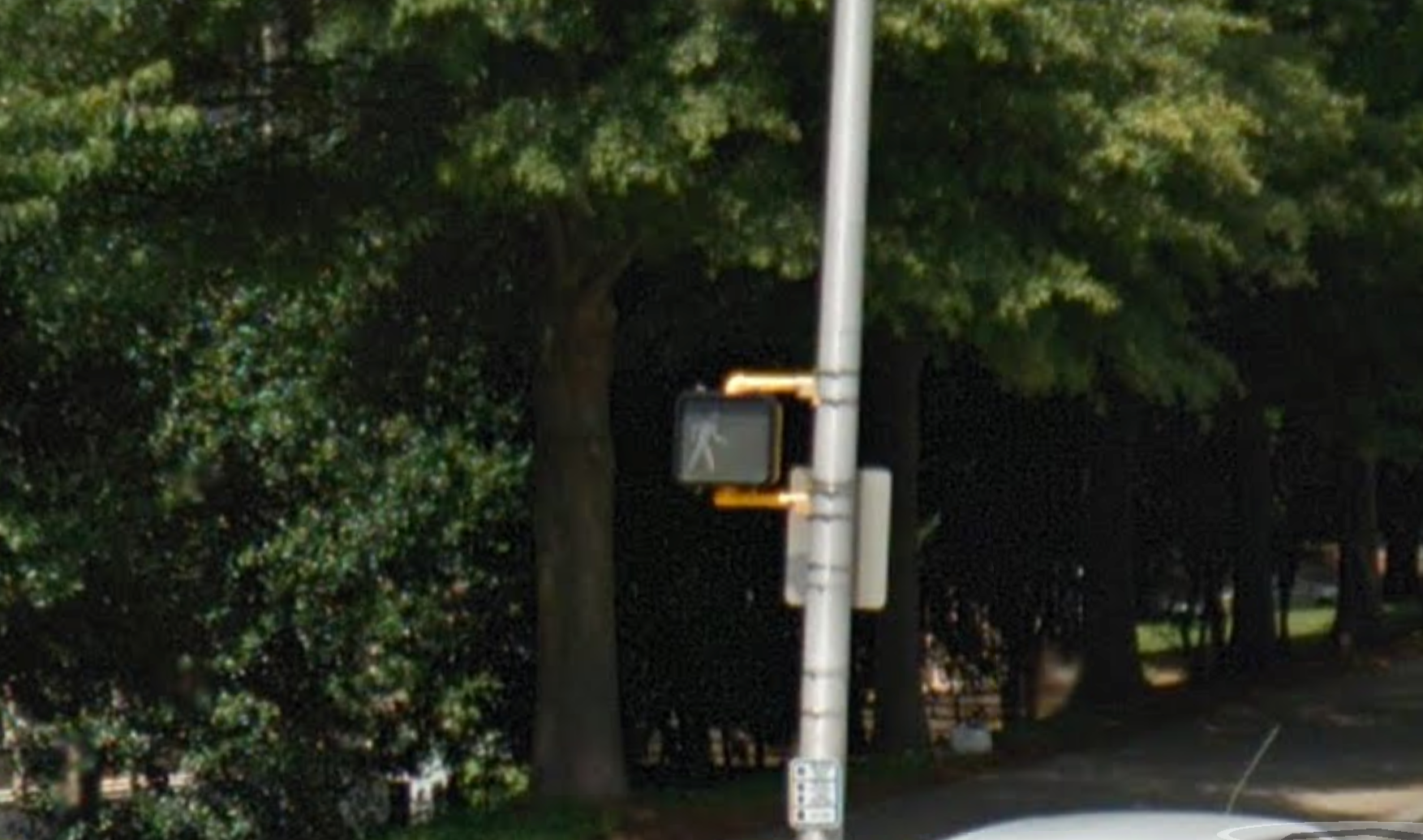
Manila
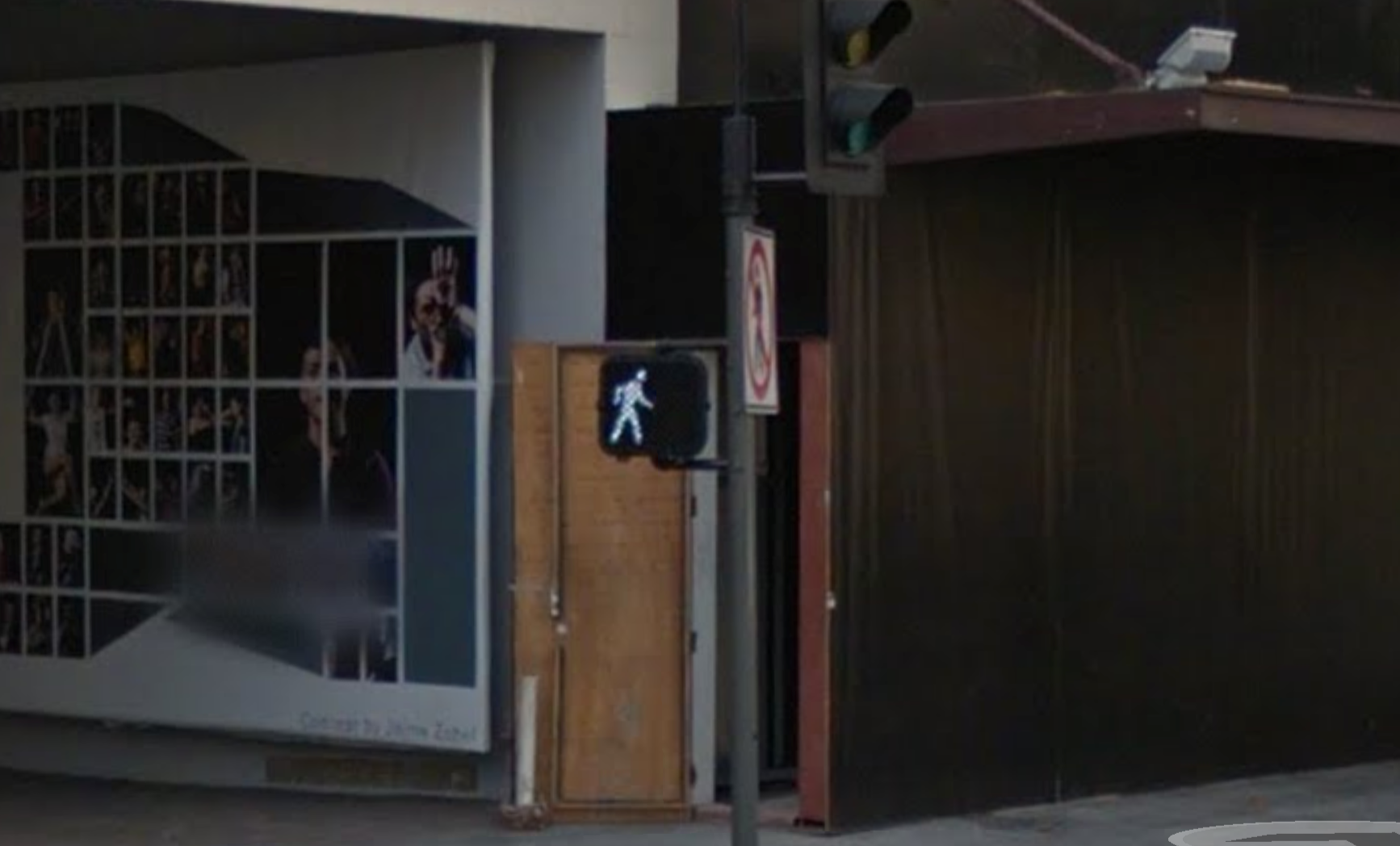
Montreal
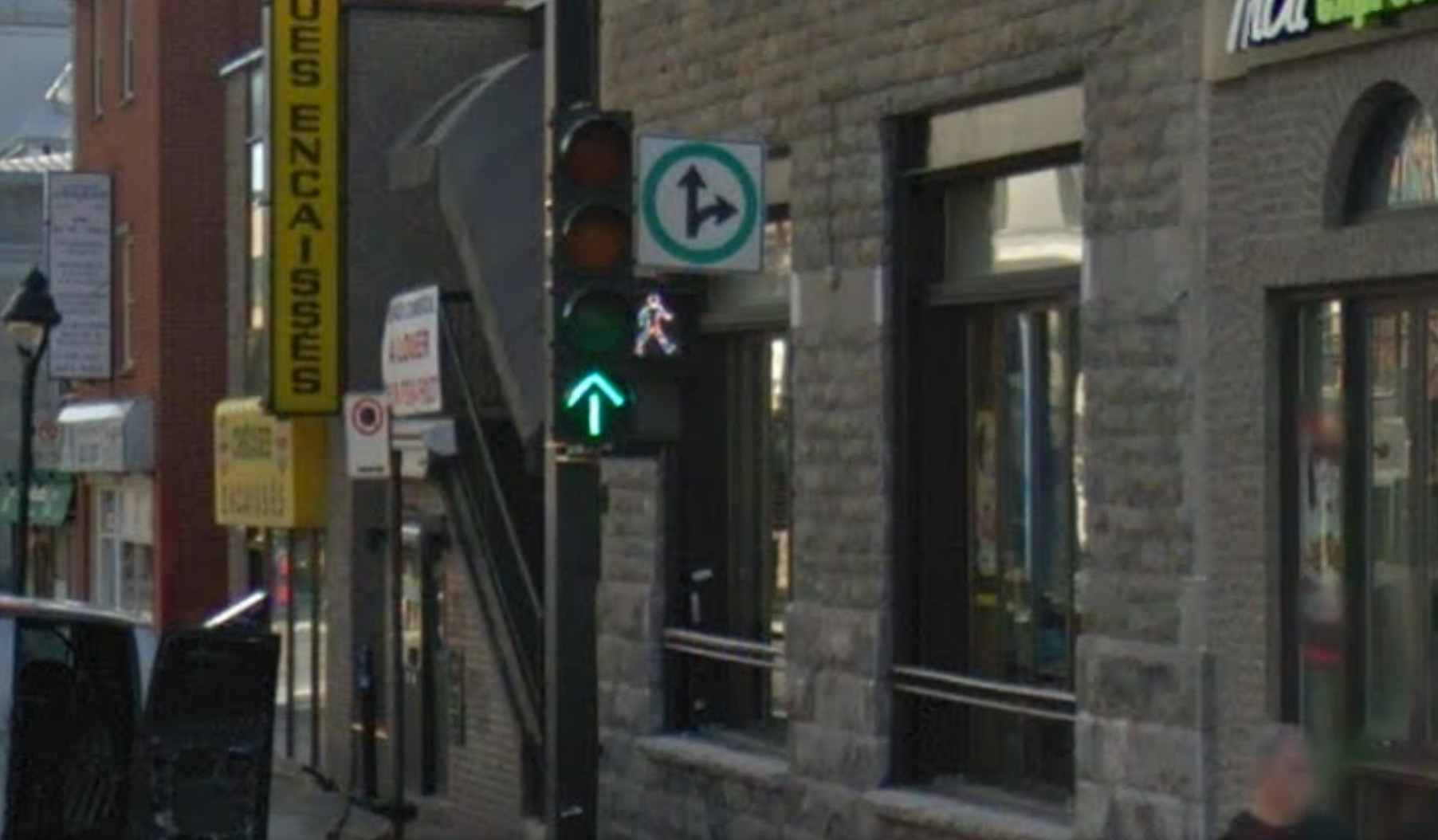
London, UK

Moscow, Russia
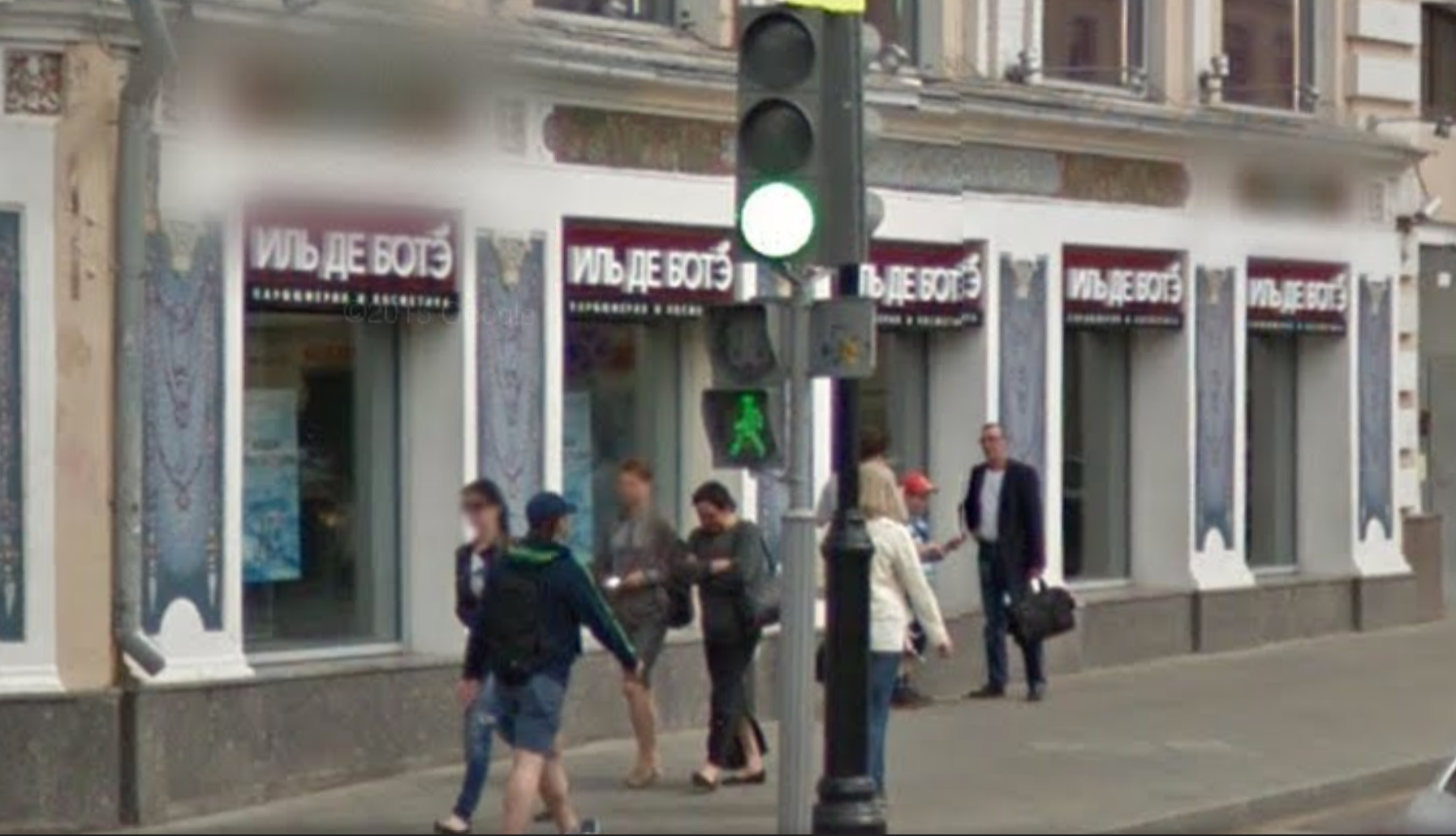
Tokyo, Japan
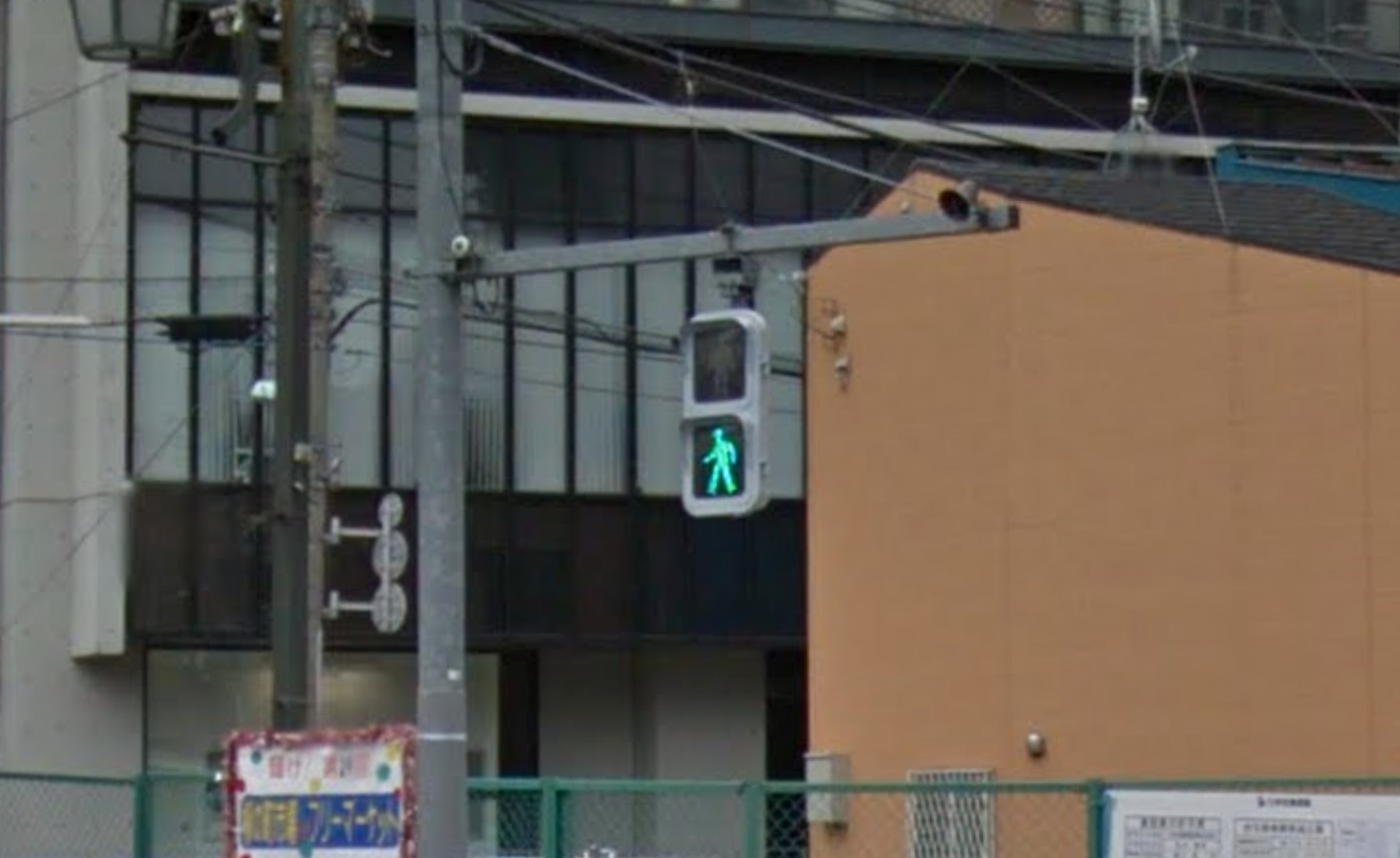
Seoul, South Korea
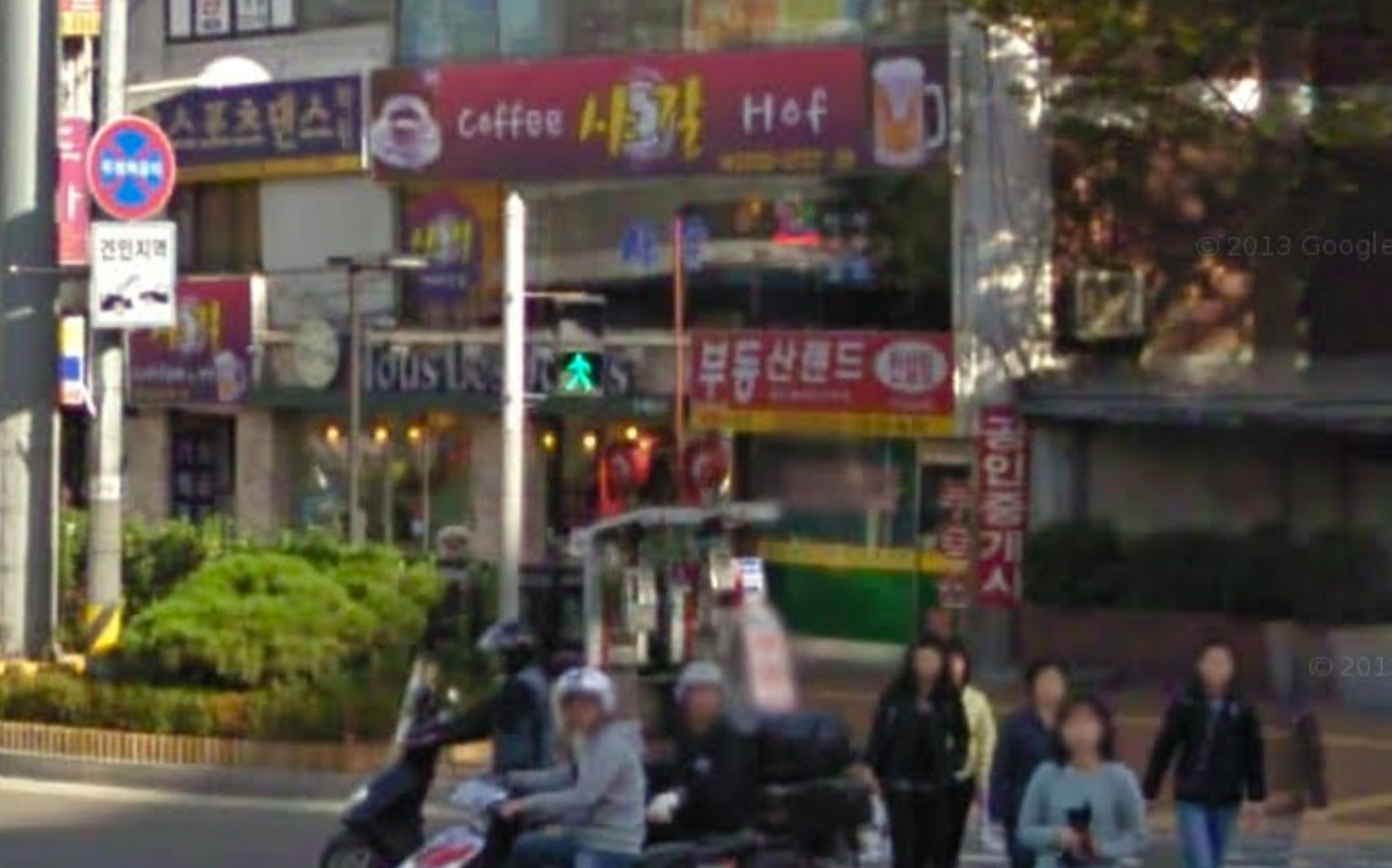
Bogota
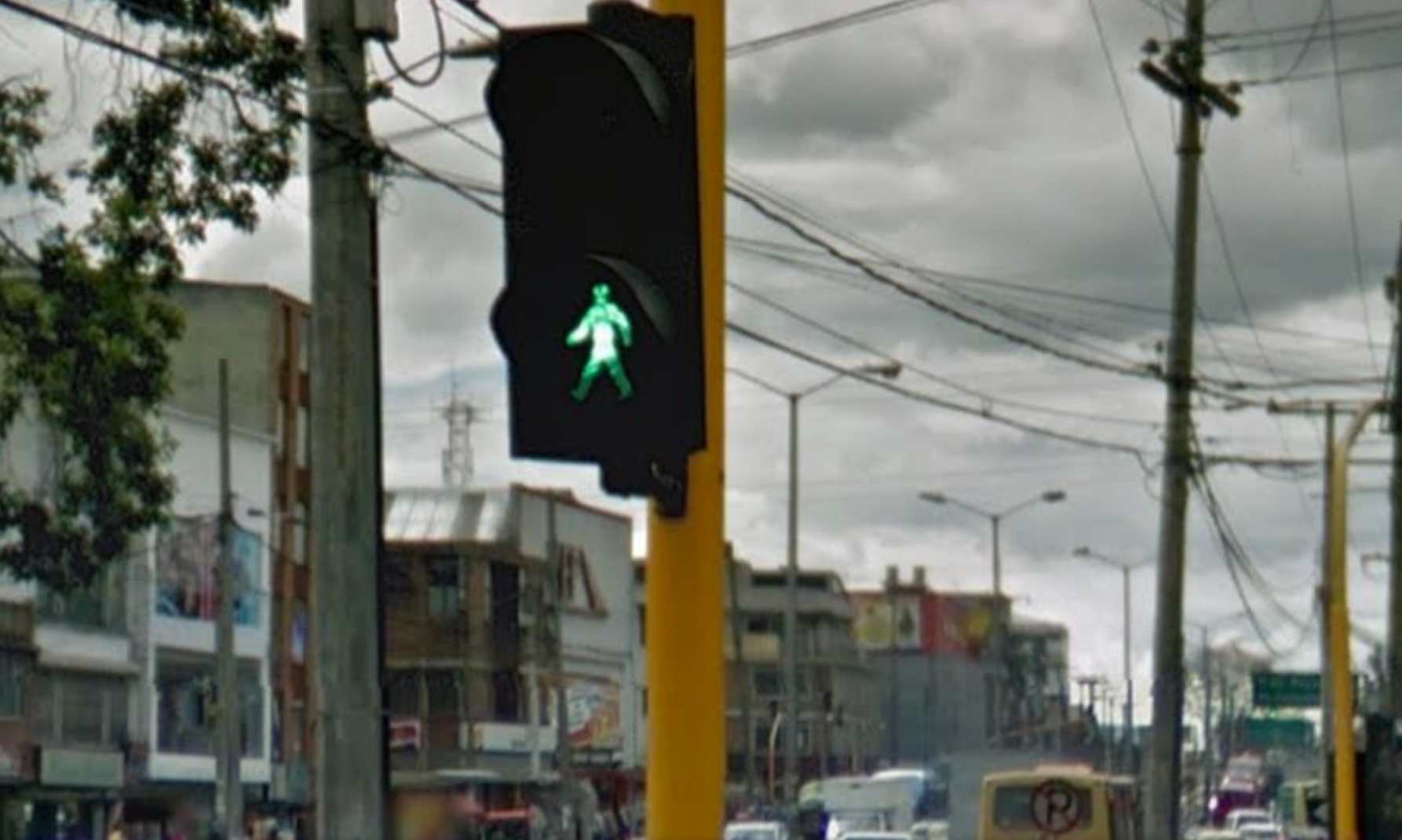
If there is some important cross-walk of the world you think I really missed out on, I’m happy to add more.










































